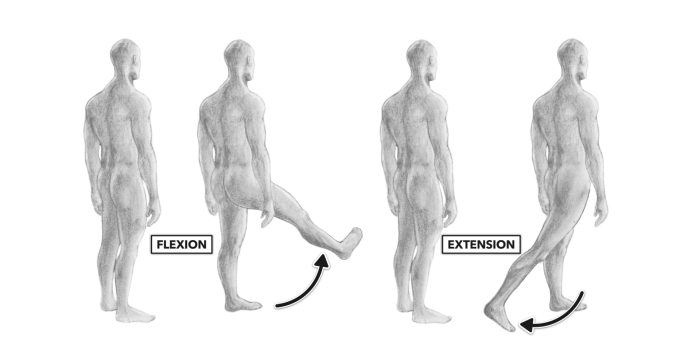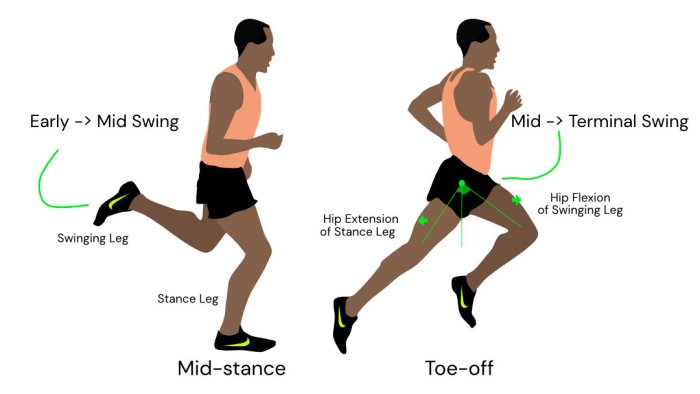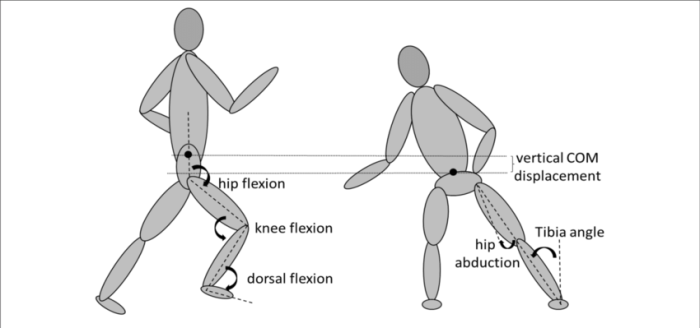What three joint actions comprise triple flexion – At the heart of human movement lies a complex interplay of joints, muscles, and actions. Among these intricate mechanisms, triple flexion stands out as a fundamental component of mobility, stability, and shock absorption. This comprehensive guide delves into the anatomy, biomechanics, and functional significance of triple flexion, exploring the three joint actions that orchestrate this essential movement.
Triple flexion, as the name suggests, involves the simultaneous flexion of three distinct joints: the knee, hip, and ankle. These joints work in concert to enable a wide range of movements, from walking and running to jumping and squatting. Understanding the mechanics of triple flexion is crucial for optimizing performance, preventing injuries, and enhancing overall physical well-being.
Definition of Triple Flexion: What Three Joint Actions Comprise Triple Flexion

Triple flexion is a term used in human anatomy to describe the simultaneous flexion of three joints: the knee, hip, and ankle. It is a complex movement that involves the coordinated action of several muscles and joints. Examples of body movements that involve triple flexion include squatting, lunging, and running.
Joints Involved in Triple Flexion, What three joint actions comprise triple flexion
The three joints involved in triple flexion are:
- Knee joint: The knee joint is a hinge joint that allows flexion and extension. It is the largest joint in the body and is responsible for bearing weight and providing stability during movement.
- Hip joint: The hip joint is a ball-and-socket joint that allows flexion, extension, abduction, adduction, and rotation. It is a major joint that connects the lower limb to the pelvis and is responsible for providing mobility and stability during movement.
- Ankle joint: The ankle joint is a hinge joint that allows flexion and extension. It is responsible for supporting the body’s weight and providing stability during movement.
Muscles Responsible for Triple Flexion
The primary muscles responsible for flexing the knee, hip, and ankle are:
- Knee flexors: The primary knee flexors are the hamstrings (biceps femoris, semitendinosus, and semimembranosus). These muscles originate from the ischial tuberosity and insert on the tibia and fibula. They are responsible for flexing the knee joint.
- Hip flexors: The primary hip flexors are the iliopsoas (iliacus and psoas major) and the rectus femoris. The iliopsoas originates from the lumbar vertebrae and iliac fossa, while the rectus femoris originates from the anterior superior iliac spine. These muscles are responsible for flexing the hip joint.
- Ankle flexors: The primary ankle flexors are the gastrocnemius and soleus. The gastrocnemius originates from the lateral and medial condyles of the femur, while the soleus originates from the posterior aspect of the tibia and fibula. These muscles are responsible for flexing the ankle joint.
The biomechanics of how these muscles work together to achieve triple flexion is complex and involves the coordinated action of several muscles and joints.
Importance of Triple Flexion
Triple flexion is an important movement for a variety of daily activities and sports. It is essential for activities such as walking, running, jumping, and squatting. Triple flexion also contributes to mobility, stability, and shock absorption.
Assessment and Rehabilitation of Triple Flexion
Clinical tests used to assess triple flexion range of motion and strength include the Thomas test, the Ober test, and the active straight leg raise test. Rehabilitation exercises and strategies for improving triple flexion function include stretching the hamstrings, strengthening the hip flexors, and improving ankle flexibility.
FAQ
What is the primary muscle responsible for knee flexion?
The quadriceps femoris, consisting of the vastus lateralis, vastus medialis, vastus intermedius, and rectus femoris, is the primary muscle group responsible for knee flexion.
How does triple flexion contribute to shock absorption?
Triple flexion acts as a shock absorber by dissipating impact forces across multiple joints. As the knee, hip, and ankle flex, they absorb and redirect energy, reducing the load on individual joints and protecting them from damage.
What are some examples of exercises that involve triple flexion?
Squats, lunges, leg presses, and calf raises are exercises that incorporate triple flexion, effectively strengthening the muscles involved and improving joint range of motion.


